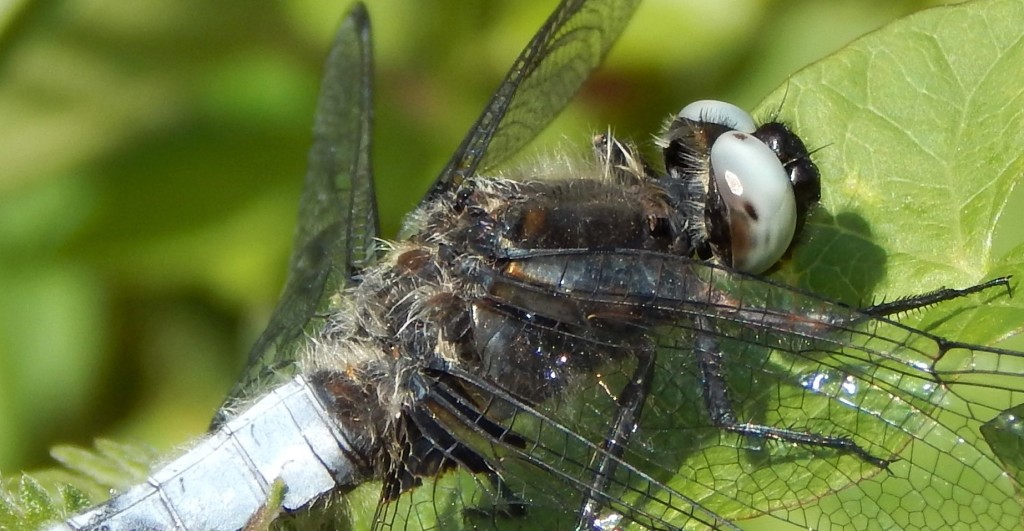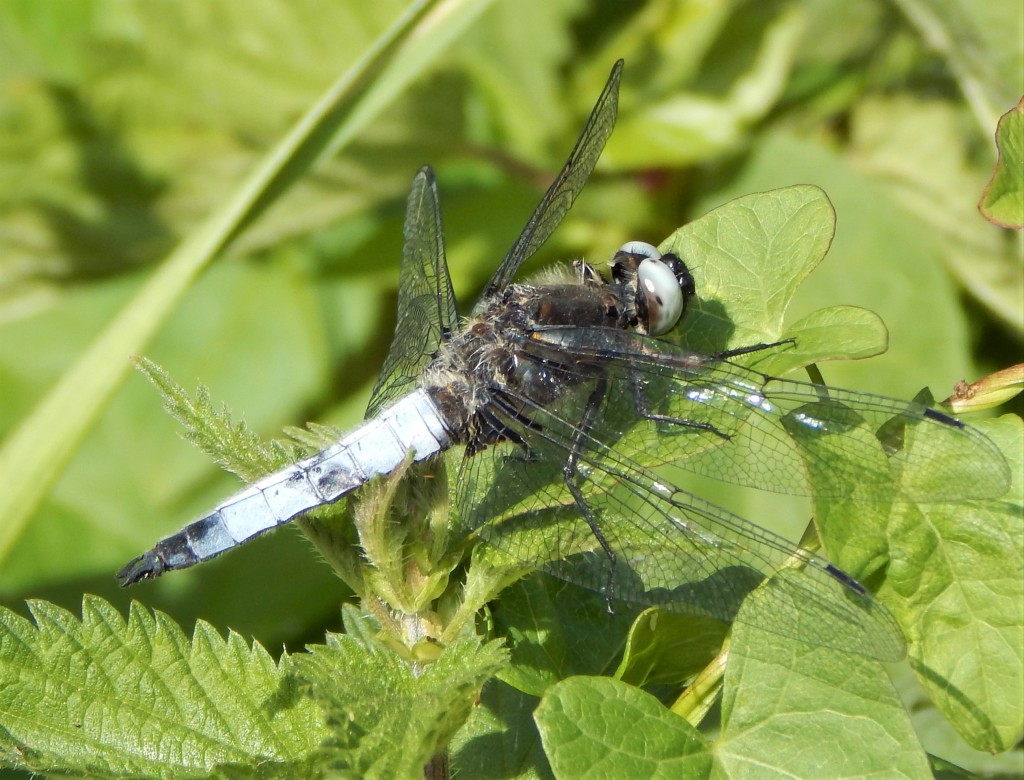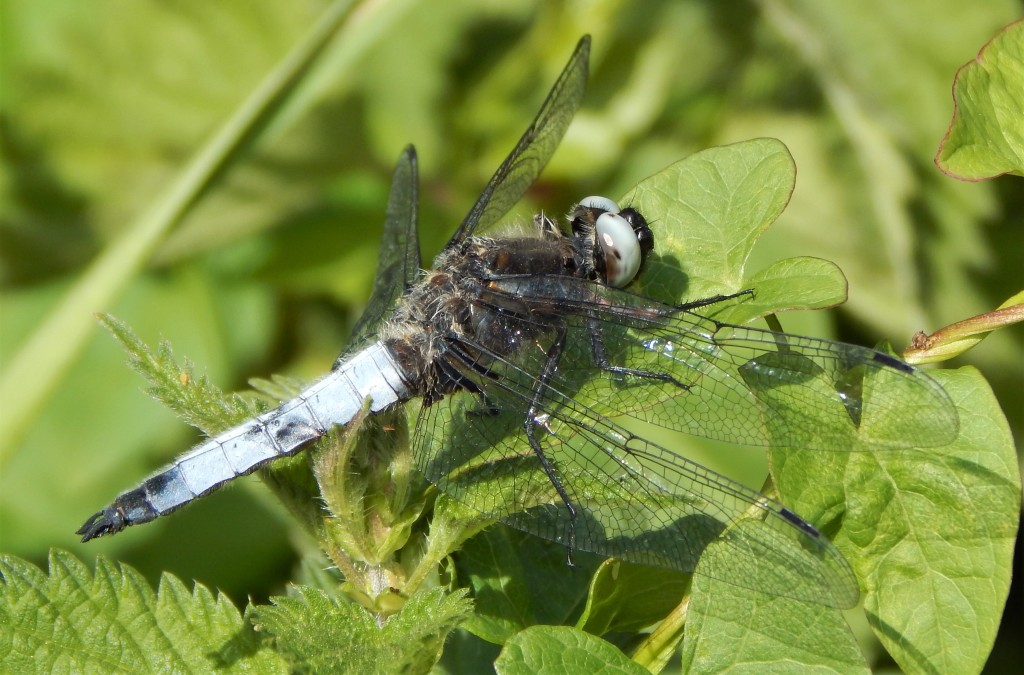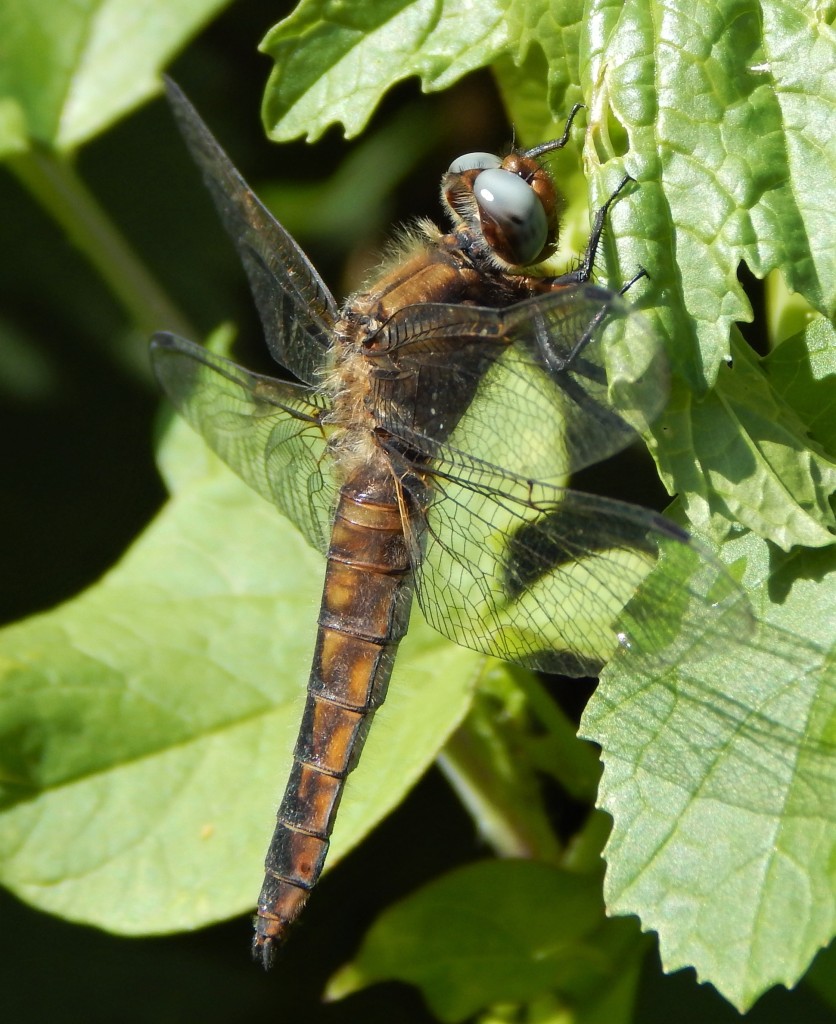
[207] Libellula quadrimaculata, Four-spotted Chaser
Introduction
Libellula quadrimaculata, the Four-spotted Chaser, is a close relative of yesterday’s dragonfly with marked spots on its wings. In America it is called the Four-spotted Skimmer.
[It is probably worth noting that Britain and the USA often give species completely different common names. When I take my information from Wikipedia it sometimes prefers the American versions.]
Taxonomy
Kingdom – Animals
Phylum – Arthropods
Class – Insects
Order – Odonata (Dragonflies and damselflies)
Infraorder – Anisoptera (Dragonflies)
Superfamily – Libelluloidea
Family – Libellulidae (Skimmers)
Genus – Libellula
Scientific Name – Libellula quadrimaculata
Name
I will let you use your knowledge of Latin to work out what quadrimaculata means, perhaps with a bit of help from [040] Lords and Ladies and the beetle we met four days ago.
Description
Male and female are both similar in shape to [206] Scarce Chaser with similarly coloured brown bodies. The spots on the otherwise clear wings are very obvious. Each wing has two spots making eight in total. You could say that either side is four-spotted – or the front wings or hind wings.
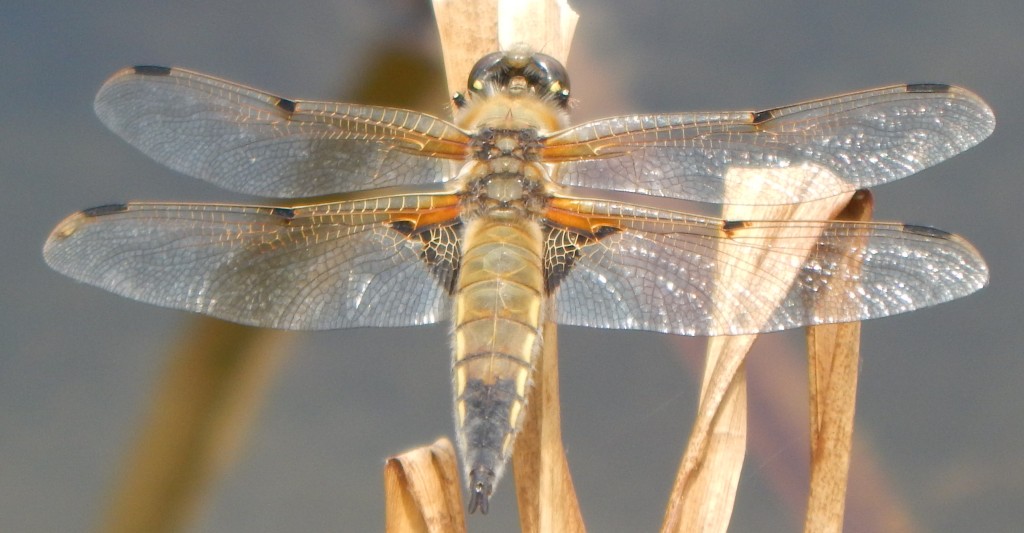
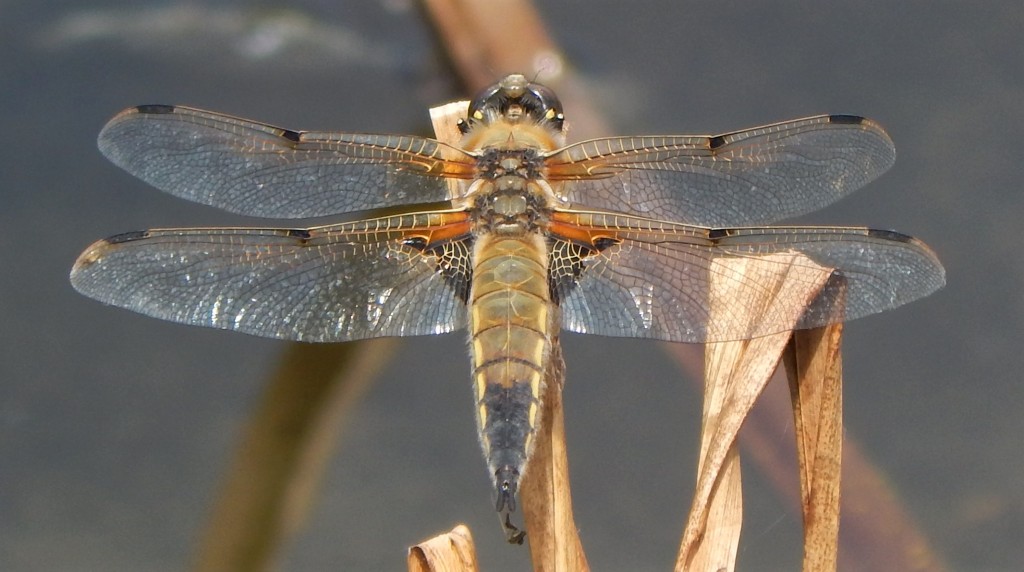
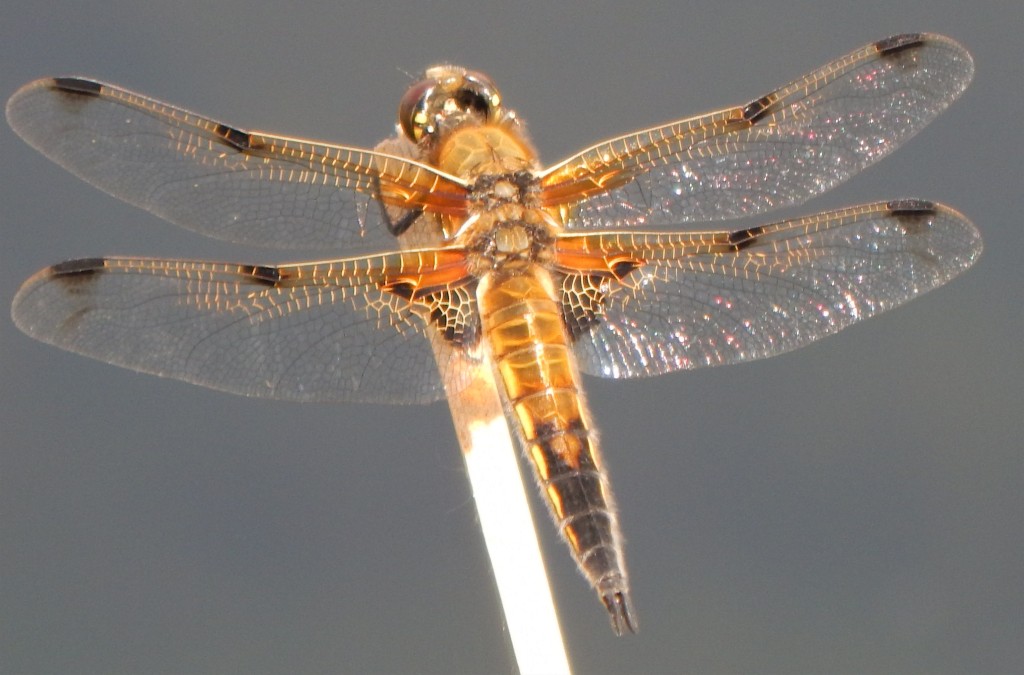
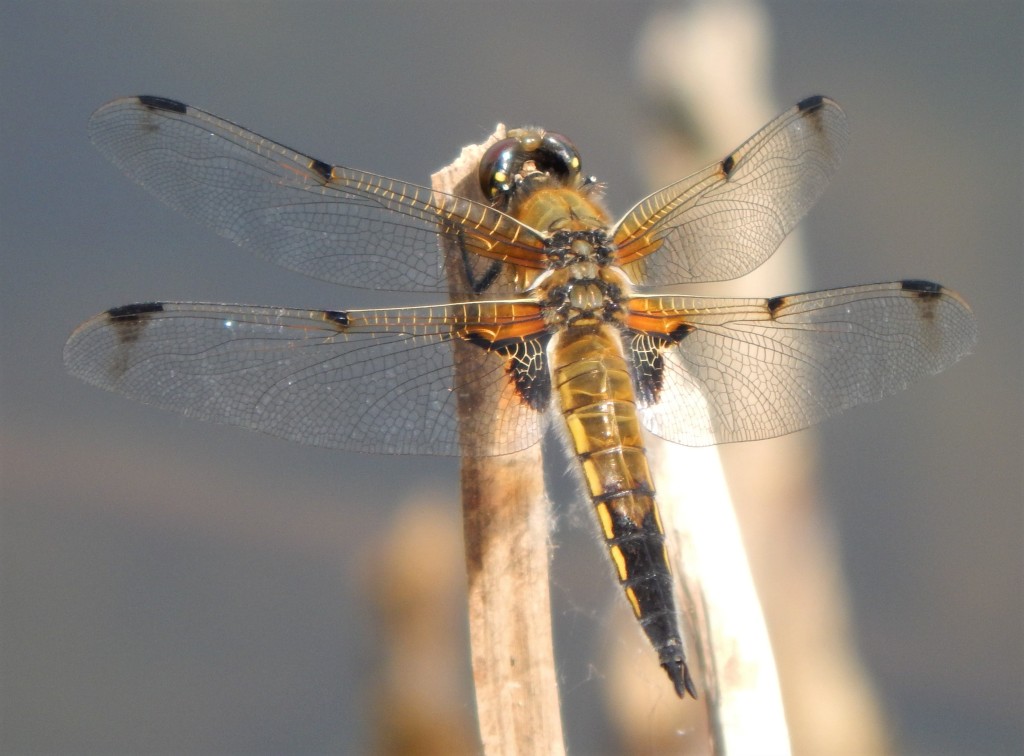

The larvae develop under water for two years eating other insects and sometimes tadpoles. Adults also eat small insects, mostly flies.
Habitat
Libellula quadrimaculata is found throughout Eurasia and North America. It is common and widespread throughout the UK and likes ponds and slow-moving water.
Other Notes
This dragonfly is the State Insect of Alaska.

